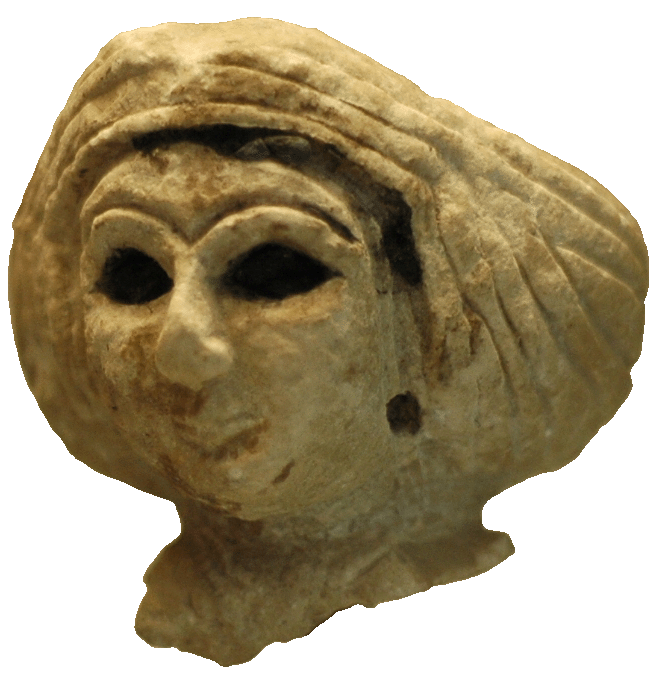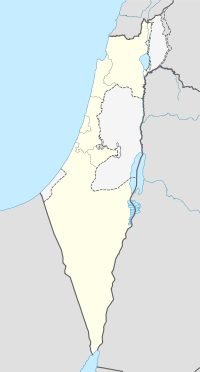Tell Qasile
- Tell Qasile
-
Tel Qasile
Tel Qasile est un site archéologique situé en Israël. Il se trouve aujourd'hui dans le Musée de la Terre d'Israël dans le quartier de Ramat Aviv au nord de Tel Aviv, à proximité du Yarkon. Les restes archéologiques qui y ont été trouvés contribuent à la connaissance des Philistins qui étaient installés sur le tel depuis le XIIe siècle jusqu'au début du Xe siècle av. J.-C.. Le tel compte 12 couches archéologiques. Les 3 plus anciennes ont trait à l'occupation philistine.
 Portail de l’archéologie
Portail de l’archéologie Portail d’Israël
Portail d’Israël
Catégorie : Site archéologique d'Israël
Wikimedia Foundation.
2010.
Contenu soumis à la licence CC-BY-SA. Source : Article Tell Qasile de Wikipédia en français (auteurs)
Regardez d'autres dictionnaires:
Tell Qasile — is an archaeological site over 3,000 years old. The site consists of the remains of a port city founded by the Philistines in the 12th century BC. It is located near the Yarkon River. Excavation of the site was begun in 1948 by Professor Benjamin … Wikipedia
Tell (Archäologie) — In der Archäologie bezeichnet das arabische Wort Tell beziehungsweise Tall oder Tel (arabisch تل, DMG Tall ‚Hügel‘, gemeint: Siedlungshügel) eine Erhebung, die durch wiederholte Besiedlung entstand, wie zum Beispiel die Zitadelle von… … Deutsch Wikipedia
ARCHAEOLOGY — The term archaeology is derived from the Greek words archaios ( ancient ) and logos ( knowledge, discourse ) and was already used in ancient Greek literature in reference to the study of ancient times. In its modern sense it has come to mean the… … Encyclopedia of Judaism
PHILISTINES — (Heb. פְּלִשְׁתִּים), a people of Aegean origin occupying the south coast of Palestine, called Philistia (פְּלֶשֶׁת, peleshet) in the Bible, and often at war with the Israelites. The name Philistine is first found in the Egyptian form prst as one … Encyclopedia of Judaism
Amihai Mazar — Amihai Ami Mazar (born 1942) is an Israeli archaeologist. Born in Haifa, Israel (then in Palestine), he is currently (since 1994) Professor at the Institute of Archaeology of the Hebrew University of Jerusalem, holding the Eleazer Sukenik Chair… … Wikipedia
Bâtiment triparti à piliers — Bâtiment tripartite à piliers Maison à pilliers à Hatzor Les bâtiments tripartites à piliers ((en) tripartite pillared buildings), sont des structures rectangulaires (en général d un rapport d un sur trois), divisés dans le sens de la longueur … Wikipédia en Français
Bâtiment triparti à pilliers — Bâtiment tripartite à piliers Maison à pilliers à Hatzor Les bâtiments tripartites à piliers ((en) tripartite pillared buildings), sont des structures rectangulaires (en général d un rapport d un sur trois), divisés dans le sens de la longueur … Wikipédia en Français
Kulturschutthügel — In der Archäologie bezeichnet das arabische Wort Tell bzw. Tall oder Tel (arabisch تل, DMG Tall, „Hügel“, gemeint: Siedlungshügel) eine Erhebung, die durch wiederholte Besiedlung entstand, wie zum Beispiel die Zitadelle von Aleppo in Syrien.… … Deutsch Wikipedia
Siedlungshügel — In der Archäologie bezeichnet das arabische Wort Tell bzw. Tall oder Tel (arabisch تل, DMG Tall, „Hügel“, gemeint: Siedlungshügel) eine Erhebung, die durch wiederholte Besiedlung entstand, wie zum Beispiel die Zitadelle von Aleppo in Syrien.… … Deutsch Wikipedia
Henri de Contenson — Henri de Contenson, né le 4 mars 1926 à Paris, est un archéologue français, directeur de recherche au CNRS. Élève d André Parrot, Raymond Lantier et André Leroi Gourhan, il a été collaborateur puis directeur de nombreuses fouilles… … Wikipédia en Français


